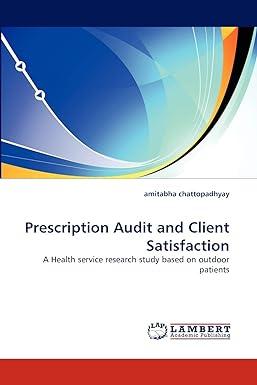Question
In the realm of financial analysis, ratio analysis has emerged as a cornerstone practice, providing a comprehensive toolkit for evaluating an organization's financial health and
"In the realm of financial analysis, ratio analysis has emerged as a cornerstone practice, providing a comprehensive toolkit for evaluating an organization's financial health and performance. This multifaceted approach involves the calculation and interpretation of various financial ratios, each revealing a unique aspect of an organization's operations and financial position. Ratio analysis encompasses liquidity ratios, profitability ratios, leverage ratios, and efficiency ratios, among others.
To delve into the depths of ratio analysis, it's imperative to begin with an understanding of its fundamental principles. Firstly, what is the overarching purpose of ratio analysis in financial assessment, and how does it contribute to the decision-making process for investors, creditors, and internal stakeholders? Moreover, how do different categories of ratios, such as liquidity, profitability, leverage, and efficiency ratios, provide distinct insights into a company's financial performance and risk profile?
Liquidity ratios, for instance, shed light on an organization's short-term financial stability and ability to meet its immediate obligations. What are the key liquidity ratios, and how does each one reveal a different facet of an entity's liquidity position? In times of economic volatility, how do businesses strike a balance between maintaining adequate liquidity and maximizing returns on their resources?
Moving on to profitability ratios, they offer a glimpse into an organization's ability to generate profits relative to its revenue, assets, or equity. What are the primary profitability ratios, and how can stakeholders utilize them to assess the financial viability and sustainability of a company? Furthermore, how do these ratios interact with one another, and how can they be used to discern underlying trends in a company's financial performance?
Leverage ratios, on the other hand, delve into an organization's capital structure and its reliance on debt financing. What are the critical leverage ratios, and how do they help stakeholders evaluate the financial risk associated with an entity? In a rapidly changing economic landscape, how can businesses strike the right balance between debt and equity to optimize their capital structure and cost of capital?
Efficiency ratios, another vital category, gauge how effectively a company utilizes its resources to generate revenue and manage assets. What are the primary efficiency ratios, and how do they provide insights into operational efficiency and asset management? How can businesses identify inefficiencies and streamline their operations to enhance overall financial performance?
Furthermore, ratio analysis is not confined to a single point in time; it thrives on trend analysis. How can stakeholders use historical ratio data to identify patterns and anticipate future financial performance? What are the challenges and nuances associated with comparing ratios across industries and competitors, and how can such comparisons inform strategic decision-making?
Lastly, in an era of rapid technological advancements and evolving business models, how does ratio analysis adapt to capture the nuances of new industries and unconventional financial metrics? How can stakeholders incorporate non-financial data and key performance indicators (KPIs) into ratio analysis to gain a more holistic view of an organization's prospects?
In this complex landscape of ratio analysis, understanding the intricacies of each ratio category, their interplay, and their adaptability to changing business paradigms is crucial. With the ultimate aim of making informed investment decisions, extending credit, or driving internal improvements, how can financial professionals and stakeholders harness the power of ratio analysis to navigate the intricacies of today's dynamic financial markets?"
Step by Step Solution
There are 3 Steps involved in it
Step: 1

Get Instant Access to Expert-Tailored Solutions
See step-by-step solutions with expert insights and AI powered tools for academic success
Step: 2

Step: 3

Ace Your Homework with AI
Get the answers you need in no time with our AI-driven, step-by-step assistance
Get Started


